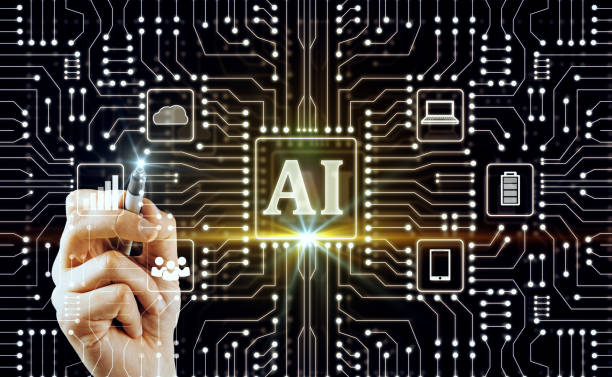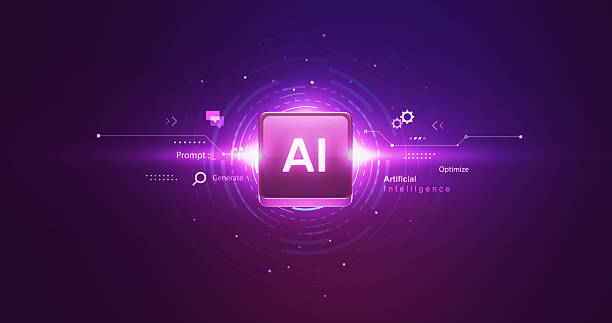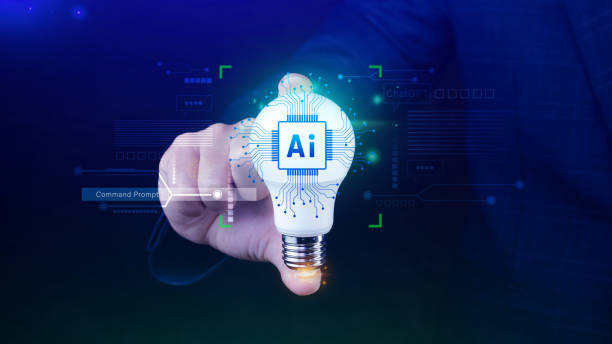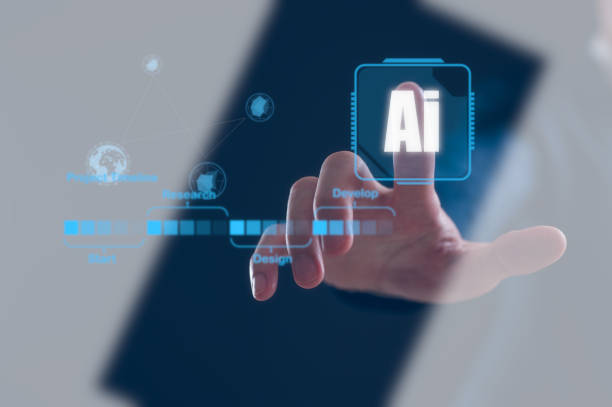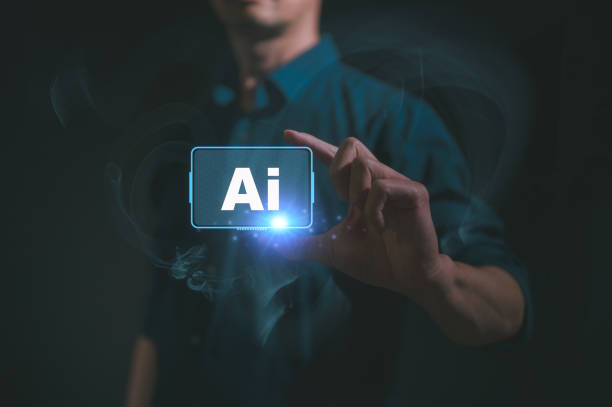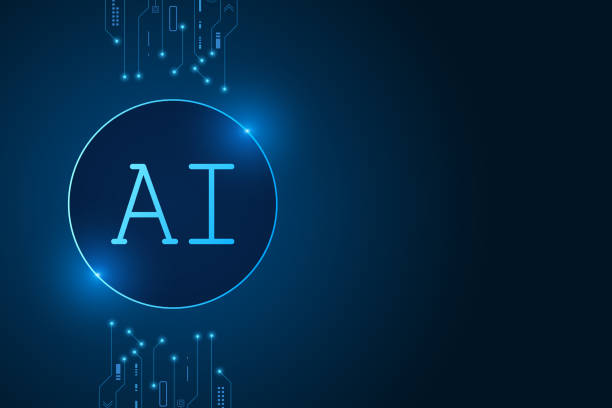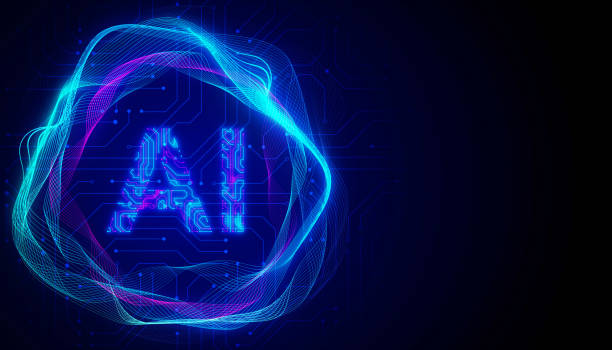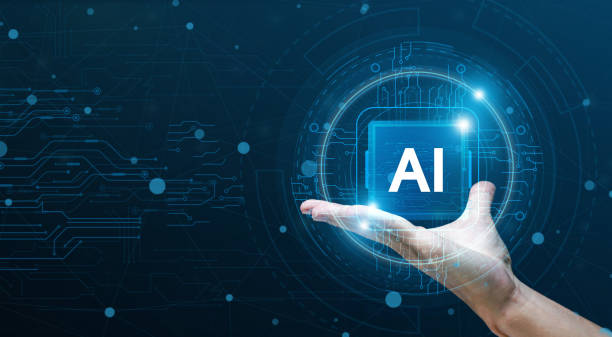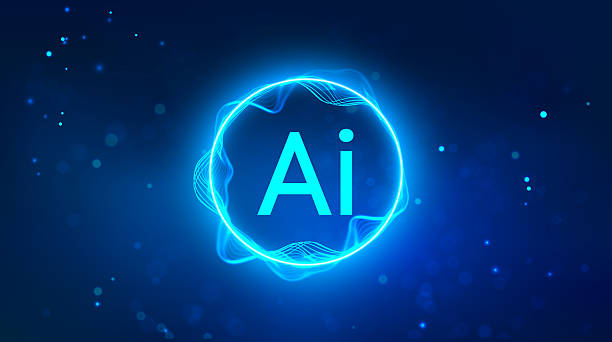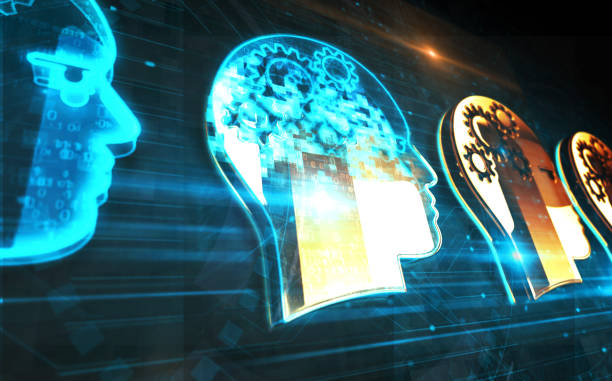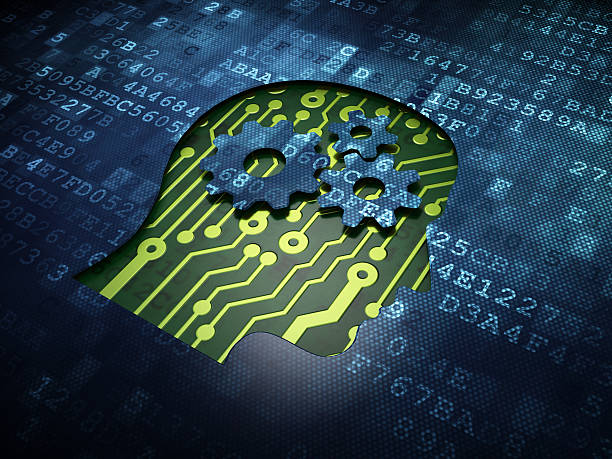What is an AI Robot and How Does it Work?
An AI robot is a combination of two separate concepts: #robotics and #artificial_intelligence.
In short, robotics deals with the design, construction, operation, and application of robots.
Artificial intelligence (AI) is a branch of computer science that seeks to create machines capable of performing tasks that typically require human intelligence.
Therefore, an AI robot is a physical machine that uses AI algorithms to understand its environment, make decisions, and take actions.
The operation of an AI robot typically involves the following steps:
- Receiving Information: Sensors, such as cameras, microphones, and tactile sensors, collect information from the environment.
- Processing Information: This information is processed by an internal computer or an external system.
AI algorithms are used to identify patterns, understand the meaning of data, and extract useful information. - Decision Making: Based on the processed information, the AI robot decides what action to take.
This decision-making can be based on a set of pre-determined rules or using machine learning algorithms. - Taking Action: The robot uses motors, actuators, and other mechanisms to perform the desired action.
This action can include movement, manipulation of objects, communication, etc.
In summary, an AI robot is a complex system that uses sensors, processors, AI algorithms, and actuators to understand its environment, make decisions, and take actions.
This technology is currently used in various industries, including manufacturing, healthcare, transportation, and customer service.
Do visitors leave your online store before making a purchase? Don’t worry anymore! With Rasaweb’s professional online store website design services, solve the problem of not converting visitors into customers forever!
✅ Significant increase in conversion and sales rates
✅ Unique and attractive user experience
⚡ Contact us now for a free consultation!
Main Components of an AI Robot
An AI robot consists of several key components that work together to enable the robot’s intelligent operation.
These components include:
- Sensors: Sensors are the eyes and ears of the robot and collect information from the surrounding environment.
There are different types of sensors, including cameras, lidars, radars, microphones, tactile sensors, and proximity sensors. - Processor: The processor is the brain of the robot and processes the information collected by the sensors.
The processor can be an internal computer or an external system. - AI Algorithms: AI algorithms are software that allows the robot to perform tasks that typically require human intelligence.
These algorithms can be used to recognize patterns, understand natural language, solve problems, and learn from experience. - Actuators: Actuators are the limbs of the robot and allow it to interact with the surrounding environment.
There are different types of actuators, including motors, pistons, arms, and wheels. - Power Source: The power source provides the energy needed for the robot to operate.
This power source can be a battery, fuel cell, or external power supply. - Control System: The control system coordinates all components of the robot and ensures that the robot operates correctly.
This control system can be hardware-based or software-based.
Click here to preview your posts with PRO themes ››
Correct coordination and interaction between these components enable the AI robot to perform various tasks in complex and dynamic environments.
Applications of AI Robots in Various Industries
AI robots have extensive applications in various industries and are increasingly becoming an integral part of production, service, and research processes.
Some of the most important applications of these robots include:
- Manufacturing: AI robots are used on production lines to perform repetitive, dangerous, or precise tasks.
These robots can significantly increase productivity and quality. - Healthcare: AI robots are used in surgery, rehabilitation, elderly care, and pharmacies.
These robots can increase surgical precision, help patients in rehabilitation, and deliver appropriate medications to patients. - Transportation: AI robots are used in self-driving cars, drones, and public transportation systems.
These robots can improve the safety and efficiency of transportation. - Customer Service: AI robots are used in call centers, chatbots, and service robots.
These robots can help customers answer questions, solve problems, and provide information. - Agriculture: AI robots are used for planting, harvesting, irrigating, and spraying agricultural products.
These robots can help farmers increase productivity and reduce costs. - Search and Rescue: AI robots are used in searching for and rescuing people in natural disasters, inspecting dangerous areas, and neutralizing bombs.
These robots can save human lives.
These are just a few examples of the applications of AI robots.
With the advancement of technology, it is expected that the applications of these robots will expand further in the future.
Artificial intelligence is evolving, and intelligent robots play an important role in this evolution.
| Industry | Application |
|---|---|
| Manufacturing | Performing repetitive and dangerous tasks |
| Healthcare | Surgery and rehabilitation |
| Transportation | Self-driving cars |
Challenges and Limitations of AI Robots
Despite the high potential of AI robots, this technology still faces challenges and limitations that hinder its widespread adoption.
Some of these challenges include:
- Cost: Developing and deploying AI robots can be very expensive.
This cost includes research and development costs, hardware and software purchases, personnel training, and maintenance. - Complexity: AI robots are complex systems that require high levels of expertise and technical knowledge.
Designing, building, programming, and maintaining these robots requires specialized skills. - Reliability: AI robots may fail in unexpected or complex situations.
The reliability of these robots must be continuously tested and improved. - Ethical Issues: The use of AI robots can raise several ethical issues.
These issues include privacy, discrimination, accountability, and impact on the labor market. - Technical Limitations: AI robots still have technical limitations in some areas.
For example, understanding natural language, solving complex problems, and interacting with unpredictable environments are still challenges that need to be overcome.
AI robot is progressing, but more research and development are needed to address these challenges and limitations.
Are you disappointed with the low conversion rate of your online store? Rasaweb transforms your online store into a powerful tool for attracting and converting customers!
✅ Significant increase in visitor-to-buyer conversion rate
✅ Unique user experience to increase customer satisfaction and loyalty⚡ Get a free consultation from Rasaweb!
The Future of AI Robots
The future of AI robots is bright and full of potential.
With the advancement of technology, AI robots are expected to become smarter, more powerful, and more affordable.
This will lead to the expansion of the applications of these robots in various industries and everyday life.
Some of the key trends shaping the future of AI robots include:
- Deep Learning: Deep learning allows robots to learn from large amounts of data and make more complex decisions.
This technology is currently used in image recognition, natural language processing, and self-driving cars. - Collaborative Robotics: Collaborative robots or cobots are designed to work alongside humans.
These robots are safe, flexible, and easy to program and can be used in various industries, including manufacturing, logistics, and services. - Internet of Things: The Internet of Things (IoT) allows robots to communicate with other devices and systems and share information.
This will lead to the creation of smarter and more efficient systems. - Edge AI: Edge AI allows robots to perform data processing on-site, without the need to send data to a central server.
This reduces latency, increases security, and improves reliability.
In the future, AI robots will play an important role in our lives and help solve many of the world’s major challenges.
AI robots are gradually entering our lives and changing the way things are done.
The Impact of AI Robots on the Labor Market
One of the main concerns about the expansion of AI robots is its impact on the labor market.
Some experts believe that robots can eliminate many jobs and lead to increased unemployment.
While others believe that robots will create new jobs and increase productivity.
The reality is that the impact of AI robots on the labor market is complex and depends on various factors.
Some jobs are more at risk of automation than others.
Jobs that involve repetitive, routine, and predictable tasks are more at risk of being replaced by robots.
On the other hand, jobs that require creative, critical, and social skills are less at risk.
Measures should be taken to reduce the negative effects of automation on the labor market.
These measures may include training and retraining the workforce, creating new jobs, and supporting entrepreneurship.
Also, ethical issues related to automation, such as privacy, discrimination, and accountability, should be addressed.
The labor market is changing and we must prepare for these changes.
AI robots require skilled personnel for design and maintenance.
Ethical Issues Related to AI Robots
The use of AI robots raises several ethical issues that need to be addressed.
Some of these issues include:
- Privacy: AI robots can collect and process large amounts of data.
This data may include personal information of individuals.
Therefore, protecting the privacy of individuals when using AI robots is very important. - Discrimination: AI algorithms can be discriminatory.
If algorithms are trained on discriminatory data, they can make decisions that are detrimental to certain groups of people. - Accountability: If an AI robot makes a mistake and causes damage, who is responsible? This is a complex question that still has no clear answer.
- Transparency: The decisions of AI robots should be transparent and explainable.
If we cannot understand how a robot has reached a decision, we cannot trust that it has made the right decision. - Control: Who should control AI robots? This is an important question that needs to be answered before robots are widely used.
| Ethical Issue | Description |
|---|---|
| Privacy | Collection and processing of personal data |
| Discrimination | Discriminatory decision making |
| Accountability | Responsibility for mistakes |
Paying attention to these ethical issues and trying to resolve them is essential to ensure the responsible and fair use of AI robots.
How Can We Prepare for the Future of AI Robots?
To be able to benefit from the advantages of AI robots and prevent their negative effects, we must prepare for the future.
This preparation includes the following measures:
- Training and Retraining: We need to keep our skills up to date and learn new skills that are needed in the world of automation.
- Supporting Entrepreneurship: We need to support entrepreneurship and help create new jobs.
- Developing Appropriate Policies: We need to develop policies that protect workers’ rights and prevent the negative effects of automation.
- Discussion and Dialogue: We need to discuss and debate the ethical issues related to AI robots and find solutions to them.
- Investing in Research and Development: We need to invest in the research and development of AI robots to improve this technology and find new applications for it.
By taking these measures, we can benefit from the advantages of AI robots and create a brighter future for ourselves and our society.
Future studies help us prepare for the changes ahead.
AI robots provide new opportunities for education and learning.
Are you worried that your company’s old website will drive away new customers? Rasaweb solves this problem by designing a modern and efficient corporate website.
✅ Increases your brand credibility.
✅ Helps attract targeted customers.
⚡ Contact Rasaweb for a free consultation!
Resources and References for Learning More About AI Robots
If you want to know more about AI robots, there are several resources and references that you can use.
Some of these resources include:
- Books: Many books have been written about AI robots.
You can obtain these books from bookstores or libraries. - Articles: Many articles about AI robots are published in scientific journals and conferences.
You can search for these articles on the Internet. - Websites: There are many websites about AI robots.
You can use these websites to learn more about this technology. - Training Courses: Many training courses are held about AI robots.
You can participate in these courses and increase your skills in this field. - Conferences and Seminars: Many conferences and seminars are held about AI robots.
You can participate in these conferences and seminars and get acquainted with experts in this field.
By using these resources and references, you can increase your knowledge of AI robots and become an expert in this field.
AI robots provide us with a new world of knowledge and information.
Conclusion: AI Robots and the Vision for the Future
AI robots are an emerging and powerful technology that has the potential to create fundamental changes in various industries and our daily lives.
With the advancement of technology, AI robots are expected to become smarter, more powerful, and more affordable.
This will lead to the expansion of the applications of these robots in various fields.
However, the use of AI robots also raises several ethical issues that need to be addressed.
To be able to benefit from the advantages of AI robots and prevent their negative effects, we must prepare for the future.
This preparation includes training and retraining the workforce, supporting entrepreneurship, developing appropriate policies, and discussing and debating ethical issues.
Through collective cooperation and effort, we can use AI robots in a way that benefits all of society and creates a brighter and more prosperous future for ourselves and future generations.
AI robots can help us solve many of the world’s major challenges.
In the end, AI robots are a powerful tool that can help us achieve our goals.
But this tool must be used correctly and responsibly.
AI robots should serve humans, not the other way around.
AI robots should help us create a better and fairer world for everyone.
AI robots can make our lives easier and more enjoyable.
AI robots will change the future.
AI robots are a great opportunity.
AI robots are a great challenge.
AI robots require thinking.
AI robots require planning.
AI robots require management.
AI robots require monitoring.
AI robots require evaluation.
AI robots require improvement.
AI robots require education.
AI robots require learning.
AI robots require innovation.
Frequently Asked Questions
| Question | Answer |
|---|---|
| What is an AI Robot? | An Artificial Intelligence Robot (AI Robot) is a machine capable of understanding the environment, reasoning, learning and making decisions to perform tasks independently. |
| What is the difference between regular robots and AI robots? | Regular robots perform repetitive tasks based on previous programming, while AI robots can learn from experience, interact dynamically with the environment, and even behave in a way that resembles human intelligence. |
| What are the main applications of AI robots? | They are used in industries (manufacturing, assembly), medicine (surgery, diagnosis), services (customer support, household), exploration (space, underwater) and many other fields. |
| What technologies are used in the construction of AI robots? | Machine Learning, Computer Vision, Natural Language Processing, Deep Learning and Robotics are among the key technologies. |
| Can AI robots have emotions? | Currently, robots do not have emotions in the human sense. They can identify emotions and react to them, but they do not experience emotions themselves. |
| What are the main challenges in developing AI robots? | Safety, reliability, ethics, autonomy, adaptation to complex environments, and natural interaction with humans are important challenges. |
| How are AI robots trained? | They are usually trained using large amounts of data, machine learning and deep learning algorithms to identify patterns and make decisions. |
| Examples of AI robots in everyday life? | Smart robotic vacuum cleaners, customer support chat robots, self-driving cars and surgical robots in hospitals. |
| Are AI robots a threat to human jobs? | Some repetitive jobs may be automated, but at the same time, robots can increase productivity and create new jobs in the development, maintenance and monitoring of these systems. |
| How is the future of AI robots predicted? | They are expected to become smarter, more autonomous and capable of performing more complex tasks and interact more closely with humans in different environments. |
And other services of Rasa Web advertising agency in the field of advertising
Intelligent digital advertising: a creative platform to improve user interaction by optimizing key pages.
Intelligent customer journey map: a fast and efficient solution to increase website traffic by focusing on SEO-oriented content strategy.
Intelligent digital advertising: a combination of creativity and technology for user interaction through marketing automation.
Intelligent marketing automation: professional optimization to increase sales using user experience customization.
Intelligent SEO: professional optimization for online growth using key page optimization.
And more than hundreds of other services in the field of internet advertising, advertising consulting and organizational solutions
Internet Advertising | Advertising Strategy | Reportage Advertising
Resources
What is Artificial Intelligence (AI)? With the best definitions
,Introductory Artificial Intelligence Training – with practical examples
,What is artificial intelligence?
,What is artificial intelligence? Definition, applications and branches of artificial intelligence
? With Rasaweb Afarin digital marketing agency, your business will shine in the digital world. By providing comprehensive services, including corporate website design, we empower your digital identity.
📍 Tehran, Mirdamad Street, next to the Central Bank, South Kazerun Alley, Ramin Alley No. 6
“`

